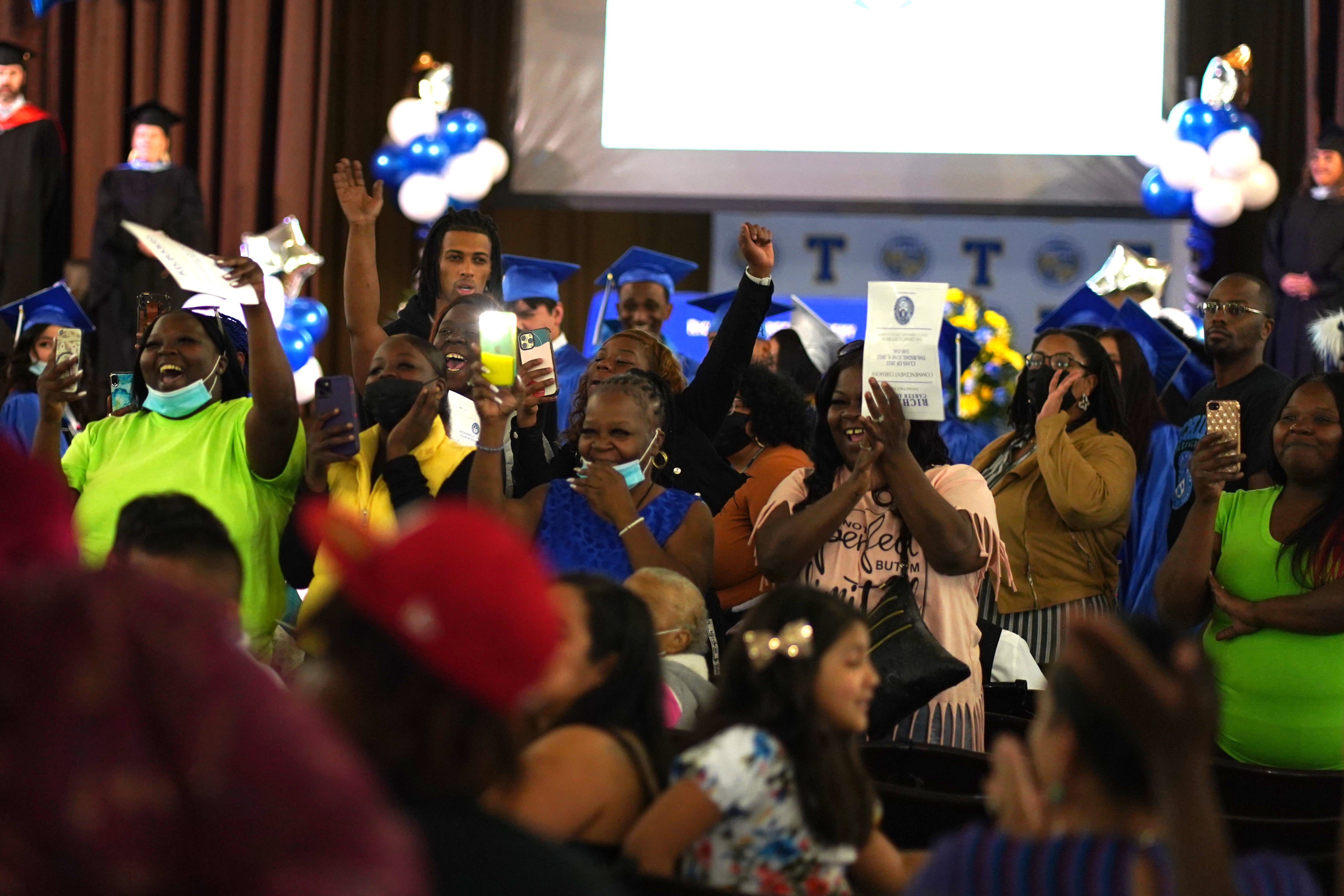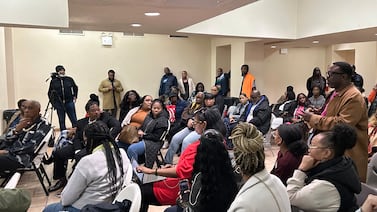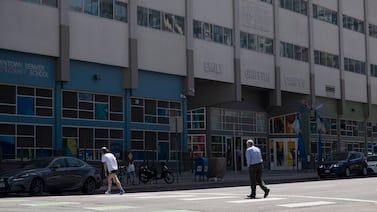A rising share of Chicago Public Schools students enrolled in college in recent years, and far more are earning degrees or certificates at two-year colleges.
That’s according to a study released Thursday by the University of Chicago Consortium on School Research and the To & Through Project, which tracks college enrollment. Additionally, the study found that more Chicago students than ever are projected to pursue and complete college over the next decade.
The study’s findings run counter to national trends of sagging college enrollment during the pandemic; nationwide enrollment in two- and four-year colleges fell by .6% from 2021 to 2022, according to the National Student Clearinghouse Research Center. Many young people across the nation are questioning whether higher education is worth the cost, said Jenny Nagaoka, one of the study’s authors and deputy director of the Consortium on School Research.
Higher education is “tremendously expensive, student debt is a huge issue [and] ultimately for a lot of students they’re unclear if the payoffs will be there,” Nagaoka said. “But CPS students are still going to college. They’re still seeing there’s value in it.”
Research shows that a college education can lead to better salary-earning potential, provide better access to high-quality housing, and contribute to better overall health, according to a review of literature by Healthy People 2030, a federal government-led project that tracks health data.
“We are hearing so much discouraging news about achievement in our schools right now, and this is not to say that’s not real, but I think it’s really important to note that at the same time, we’re actually also seeing increases in attainment,” Nagaoka said.
The study used a measure called the Post-Secondary Attainment Index, or PAI, to project college enrollment and completion based on current high school graduation and college enrollment and completion rates. Researchers calculated graduation rates slightly differently from the district, which is why they’ve come up with an 84-percent graduation rate for 2022 versus 82.9% reported by CPS. (The authors emphasized that the index is not meant to be a prediction; rather, it is a “starting place” to understand how to improve current patterns.)
This year the index is 30%, meaning that if CPS graduation and college enrollment and completion rates remained the same over the next decade, 30 out of 100 current ninth graders would earn a college credential by the time they are 25, researchers project. That is a 2.4 percentage point increase over last year and the highest rate on record since researchers began calculating this index in 2013. At that time, the index was 23%.
This year’s ninth graders were in middle school when the pandemic shuttered school buildings.
Nagaoka said they’re “cautiously optimistic” that these trends won’t reverse in the future, since this year’s record-setting data reflects students who were in high school and college during the pandemic.
But the study also found significant racial disparities within the data. For example, 66% percent of Asian American women would earn a college credential over the next decade according to the PAI, but just 13.6% of Black men would do the same.
During an event Thursday announcing the study’s findings, CPS Chief Education Officer Bogdana Chkoumbova acknowledged that the district has more to do to close racial disparities.
“With these groups, especially at the high school level, we’ve learned that one of the most impactful ways we can provide support is by establishing partnerships that will provide mentorship and guidance to the students throughout their high school experience,” she said.
The researchers also studied college enrollment data from 2022 and college completion data from 2021, based on data that was available. Some highlights included:
- 60.8% of CPS students who graduated in 2022 immediately enrolled in two-year or four-year colleges, 1.5 percentage points higher than the class of 2021.
- There are stark racial disparities in who pursued college upon graduation in 2022. For example, nearly 80% of white women immediately enrolled in college upon graduation, while just 45% of Black male students did the same.
- Just over 53% of English learners immediately pursued college after graduating last year, compared with 68% of former English learners.
- For the class of 2015, nearly 56% of students who immediately enrolled in a four-year college and roughly one-third of students who immediately enrolled in a two-year college eventually earned a bachelor’s or associate degree, or earned a certificate by 2021.
- For those who did not immediately enroll in college in 2015, roughly 3% earned a bachelor’s degree within six years. Another 5% completed an associate degree or certificate. While those rates are on the rise, they are 1.7 percentage points smaller than similar completion rates for the class of 2009.
- The percentage of students who earned some sort of college credential after enrolling in four-year schools dipped by .6% between the graduating classes of 2014 and 2015.
Chkoumbova attributed the gains to various efforts across district schools to keep students interested in school and prepared for the future, including more career and technical education and dual-credit programs. She also pointed to the district’s work on how it disciplines students. Rather than suspending students, schools are using restorative practices to keep them connected and in class.
A district spokesperson pointed to a host of other programs, such as a new pilot initiative that aims to re-engage young people who are no longer in school or working. The spokesperson also pointed to efforts to get students interested in college and staying there. That includes the Direct Admissions Initiative, which tells seniors whether they can get into a select list of colleges, and another program that provides students with support and mentorship in the two years after they graduate from high school.
Nagaoka also highlighted the increase of 5.6 percentage points in the two-year college completion rate for class of 2015 graduates, the largest increase by far over at least the past six years.
That increase, researchers and Chkoumbova noted, coincides with the onset of Chicago’s STAR Scholarship, which former Mayor Rahm Emanuel announced in the fall of 2014 and offers free tuition to City Colleges for any CPS student with at least a 3.0 grade point average by high school graduation.
Chicago’s college enrollment rates beat national figures for high-poverty schools by about 11 percentage points, researchers found. Nagaoka attributed this in part to efforts by counselors, nonprofits, and others who work in schools to ensure students know about their college options.
More specifically, CPS requires students to create a post-secondary plan, or “evidence of a plan for life beyond high school,” in order to graduate from high school. That requirement forces students to have a conversation about what’s next, she said.
Ninety-seven percent of seniors in the class of 2022 submitted a post-secondary plan, a district spokesperson said.
Reema Amin is a reporter covering Chicago Public Schools. Contact Reema at ramin@chalkbeat.org.






